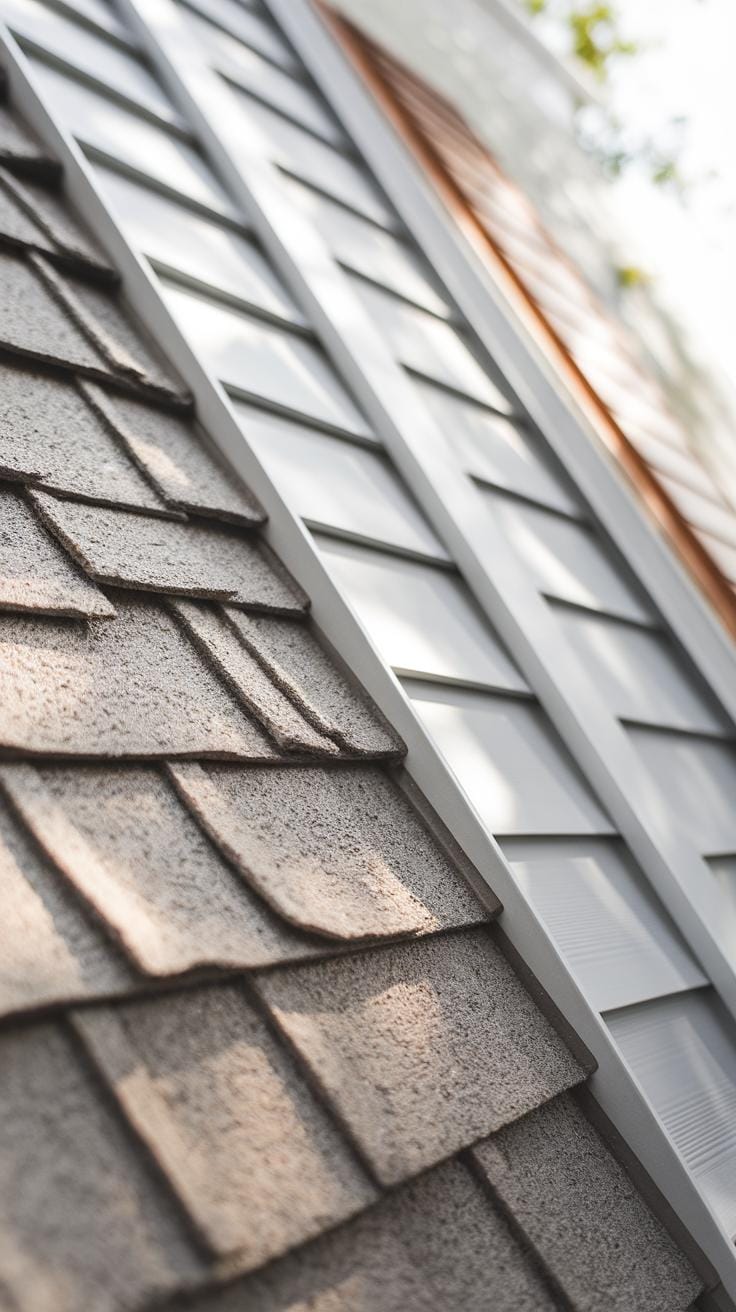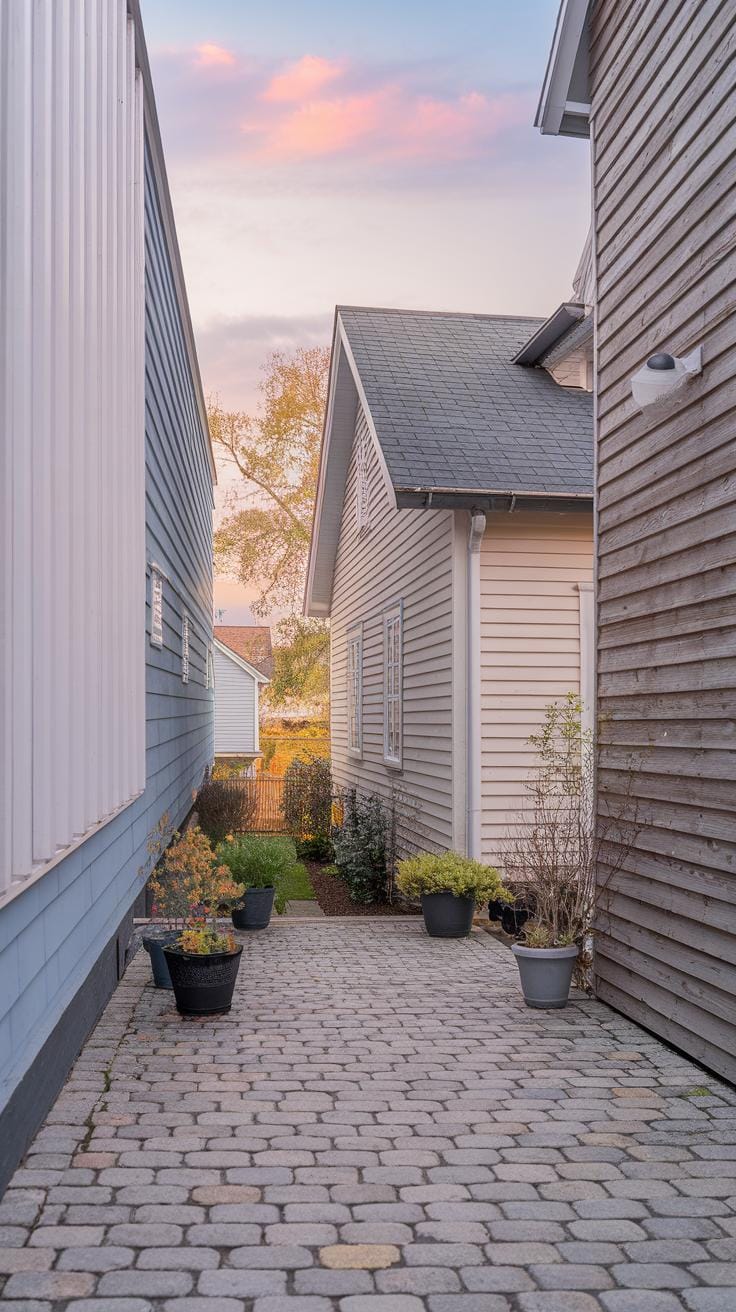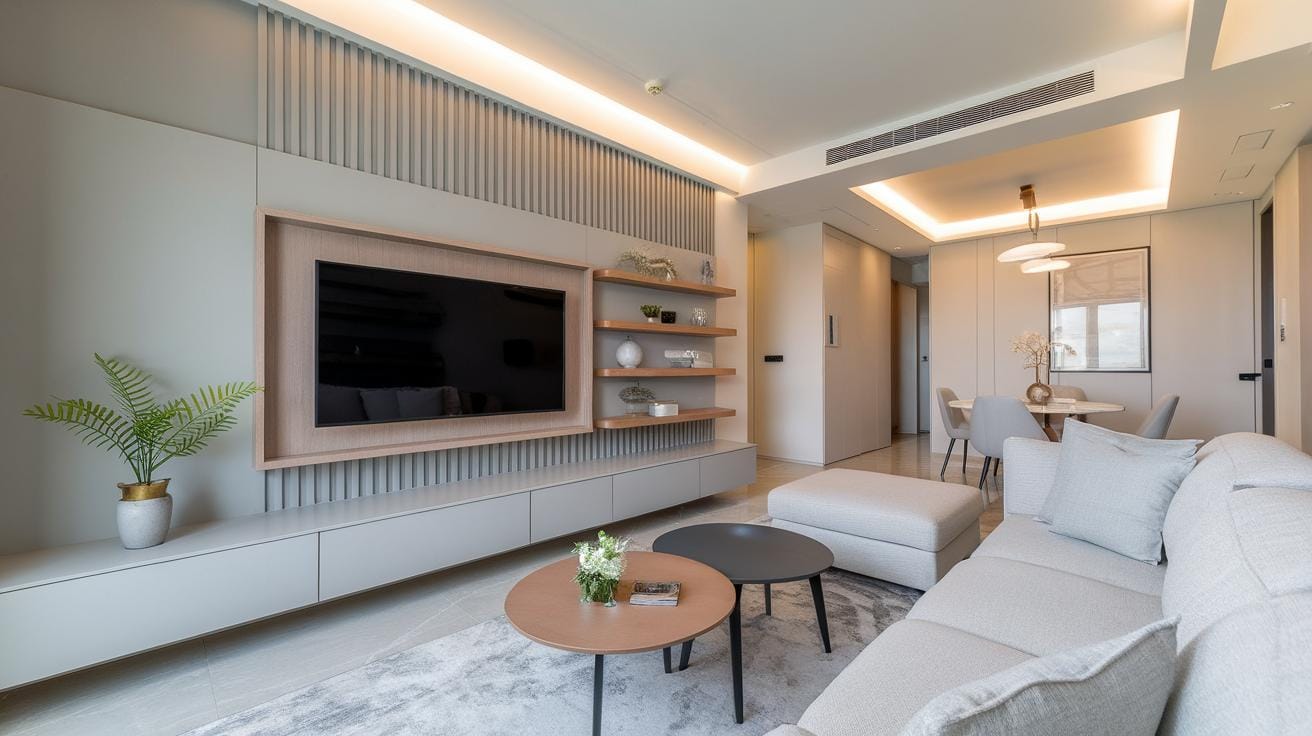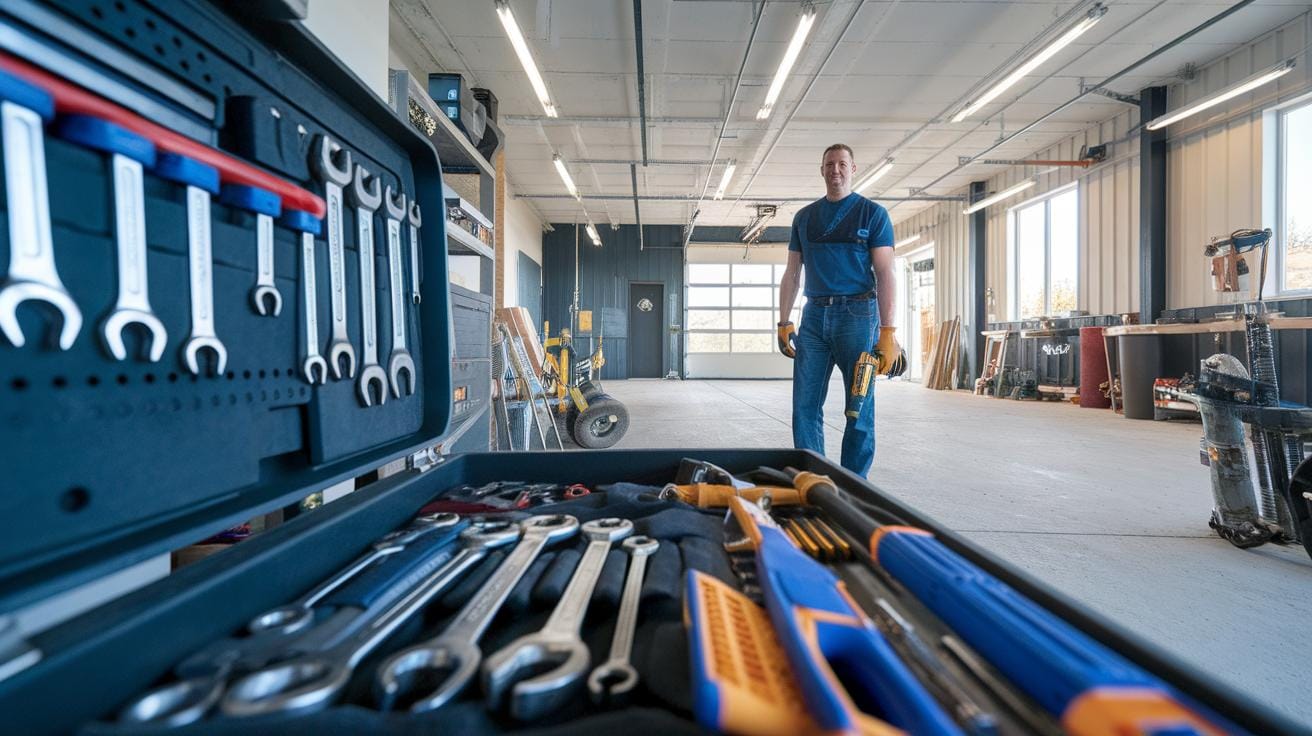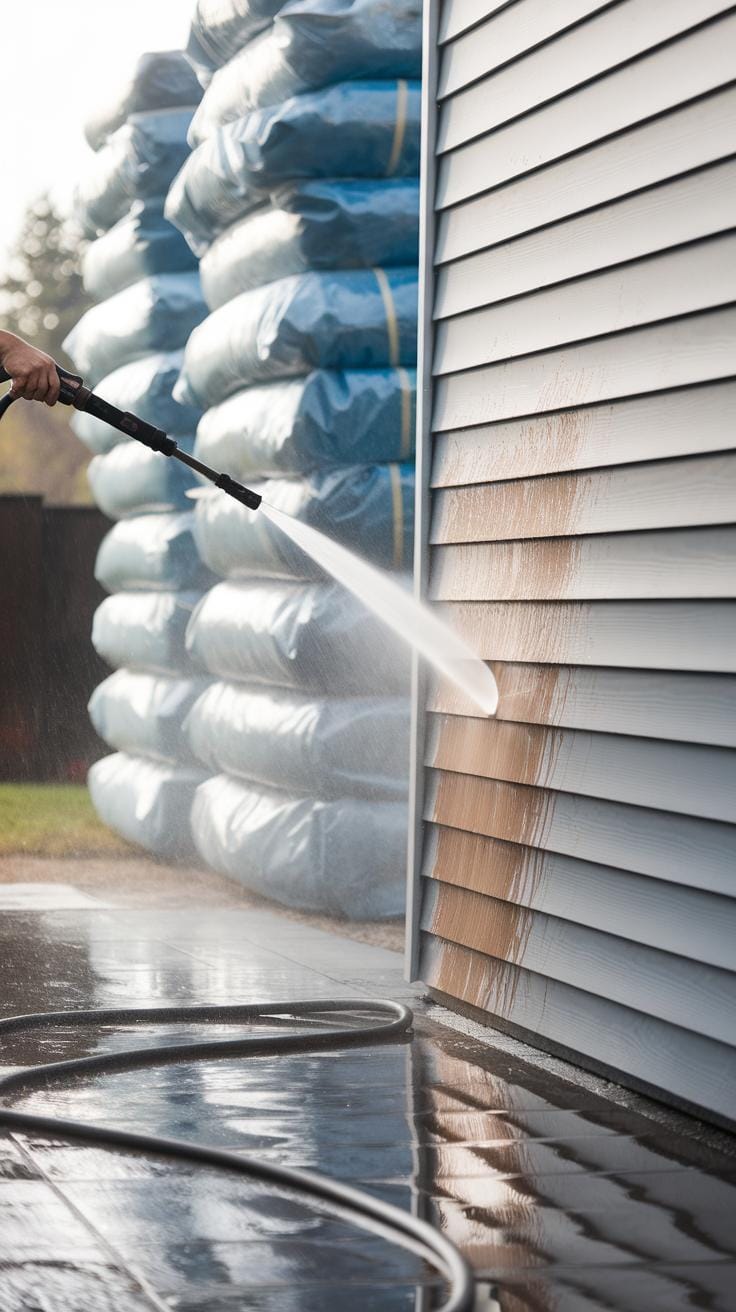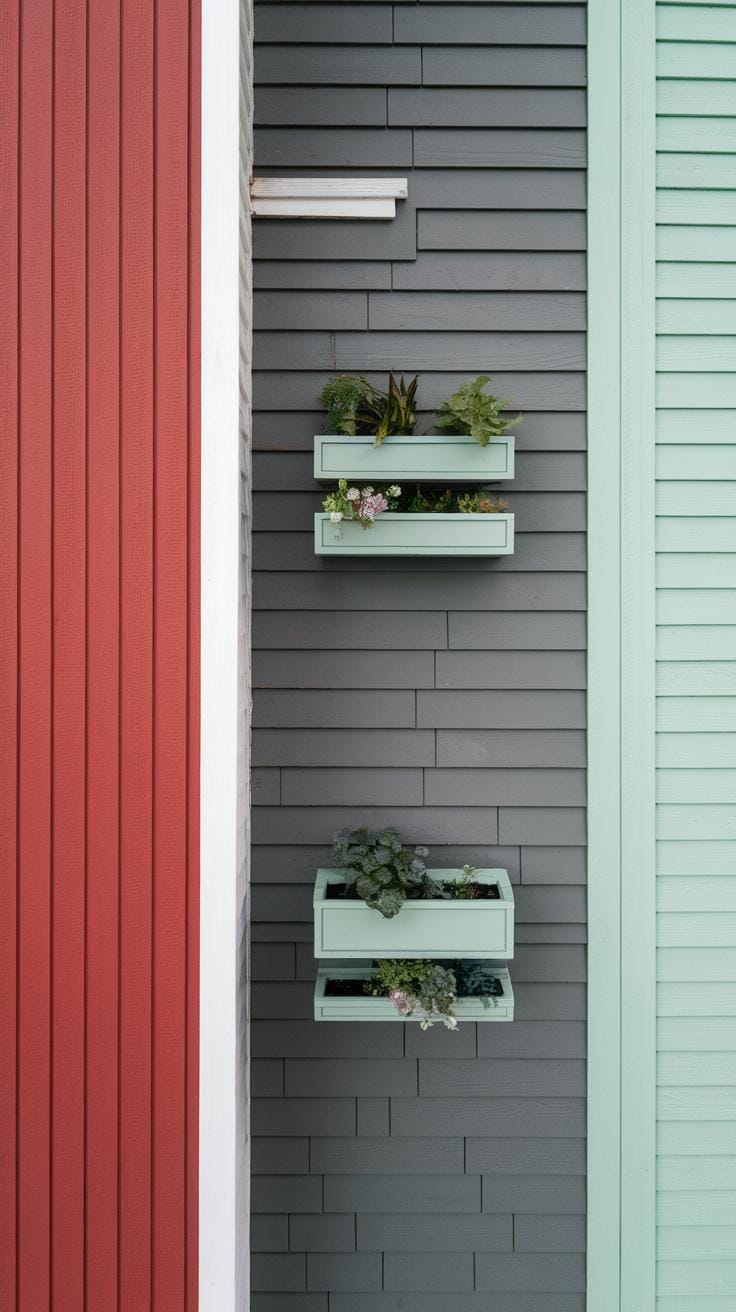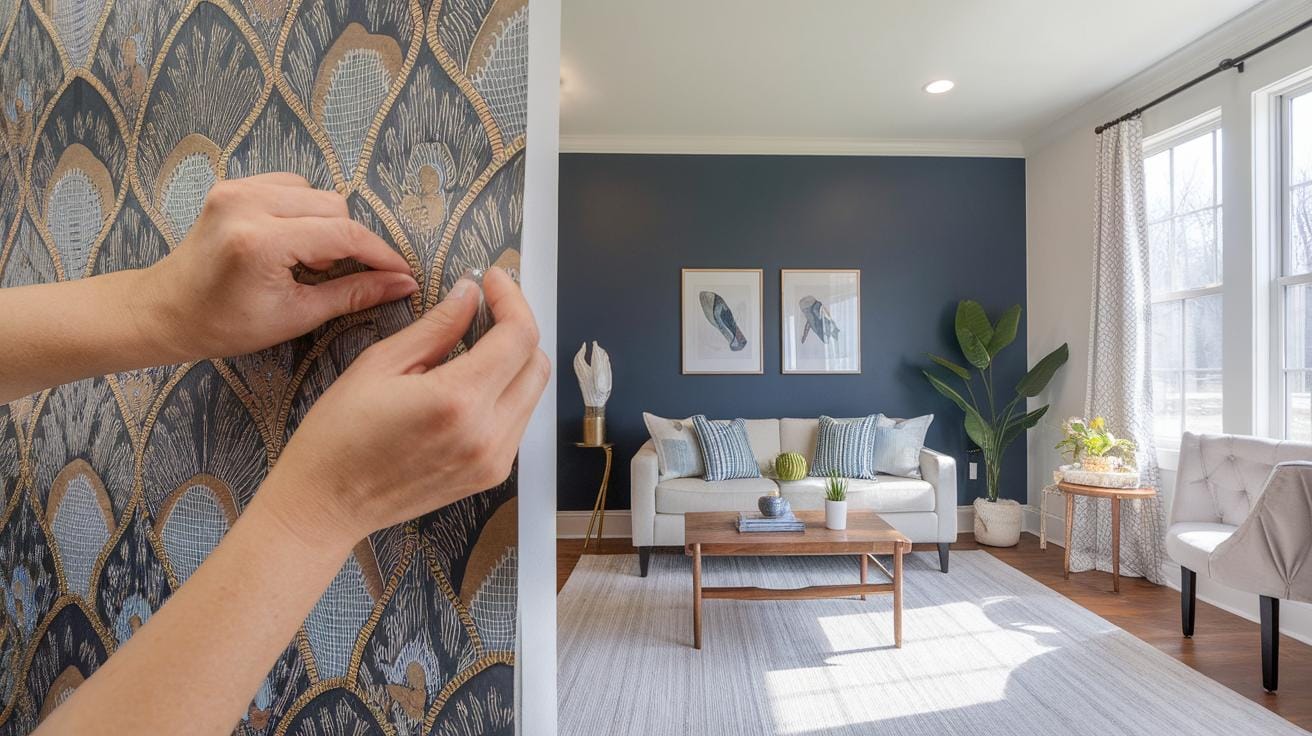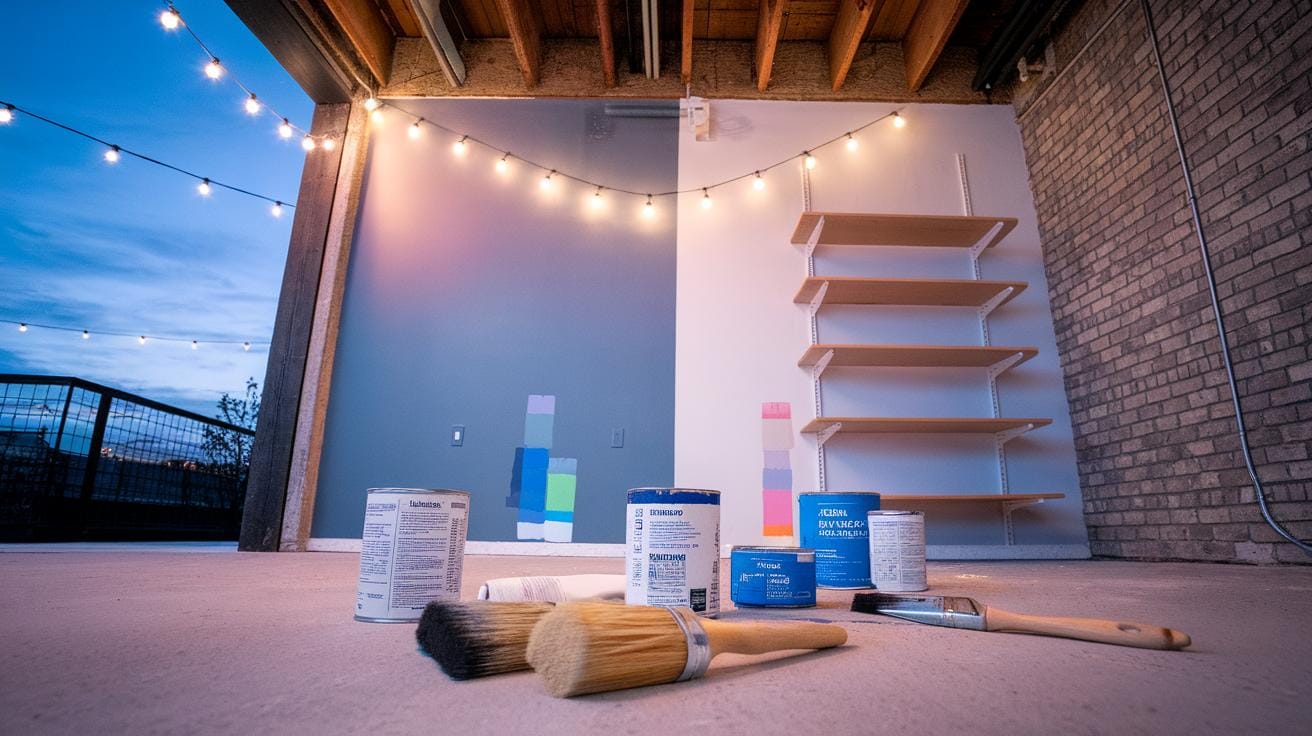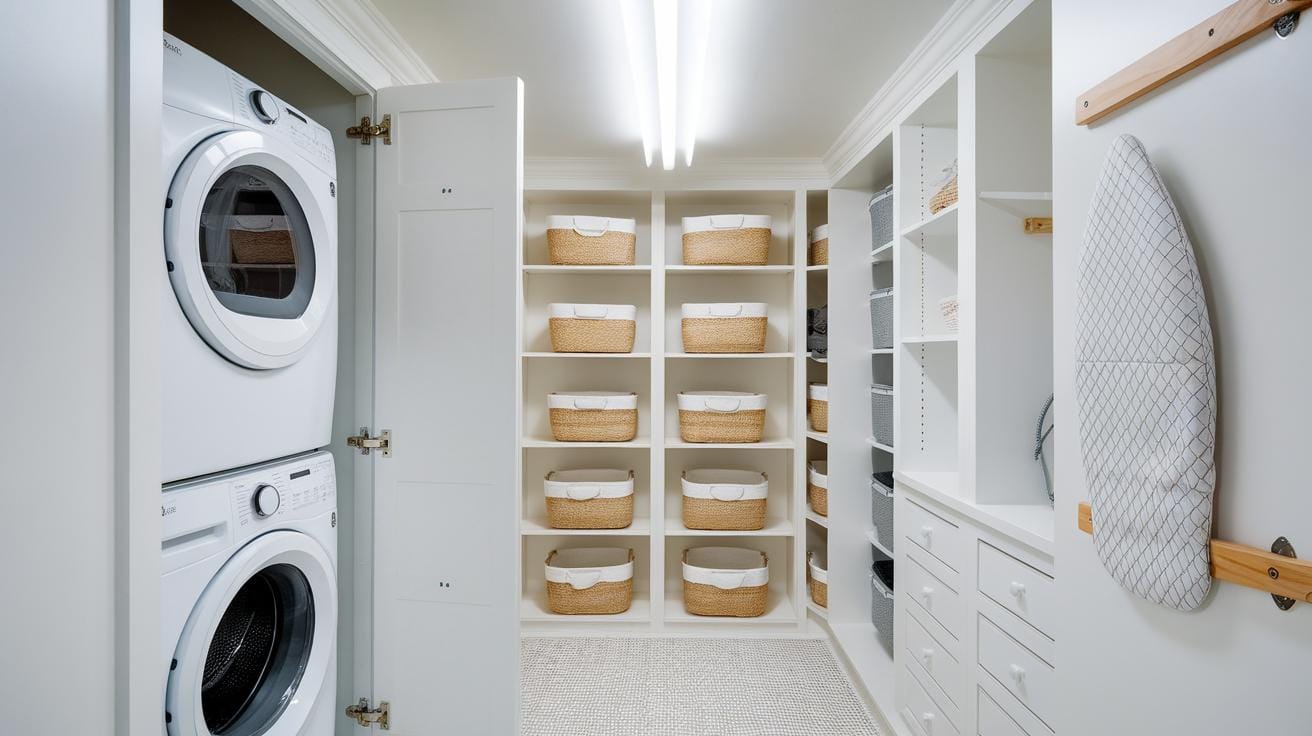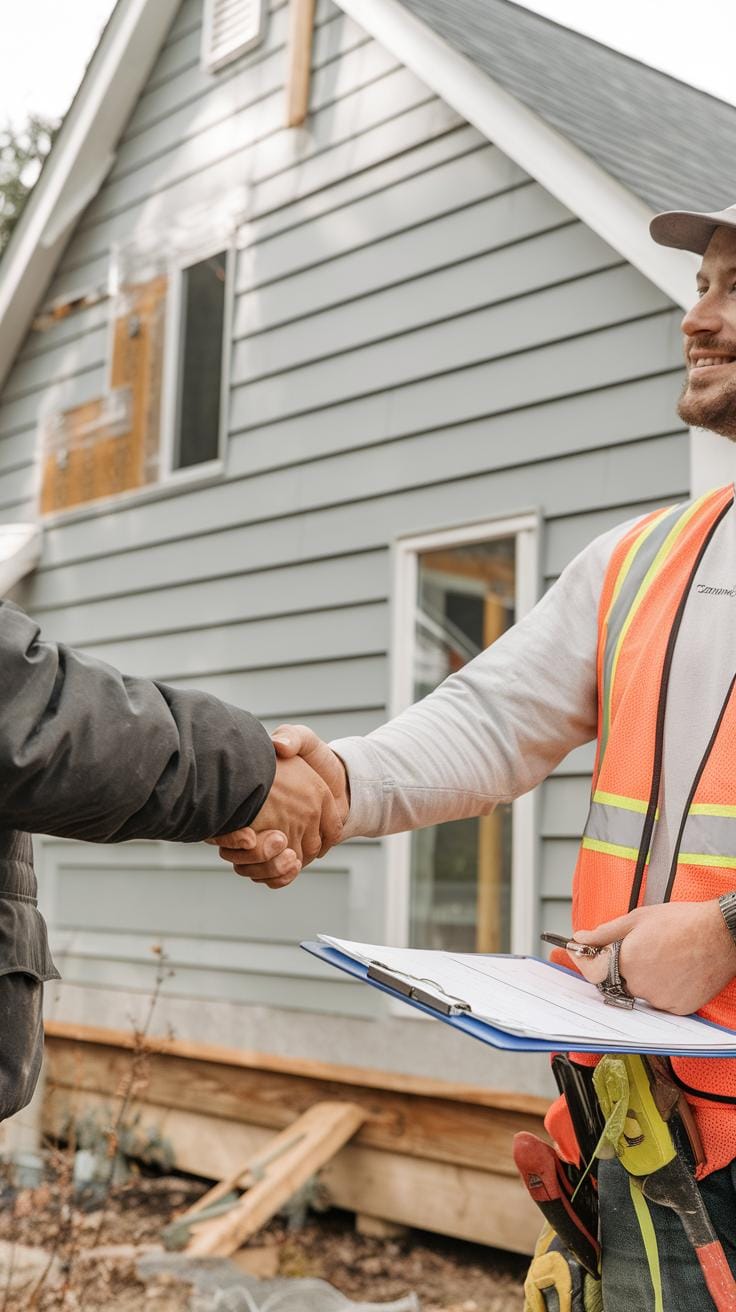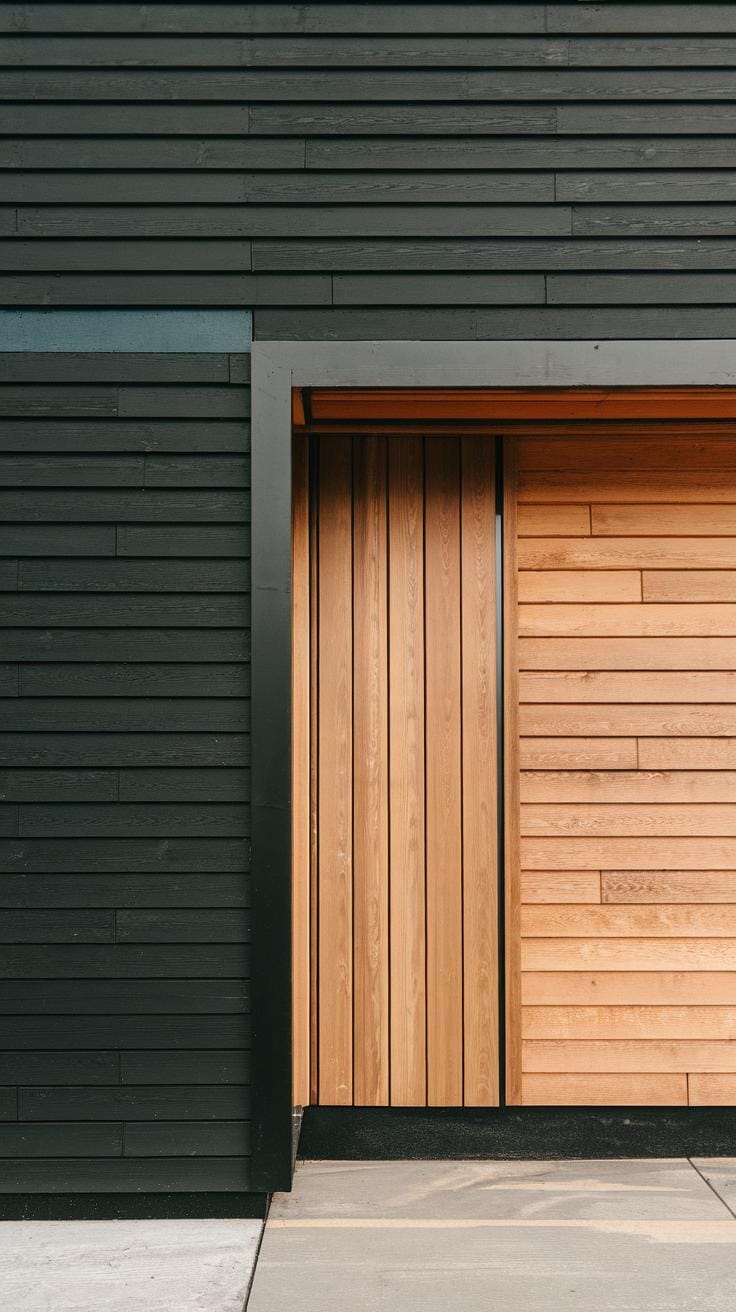Introduction
When you want to improve your home’s external appearance, house siding is a powerful place to start. The siding not only protects your home from harsh weather but also gives it a distinct look that sets the tone for your property. If your siding looks tired, outdated, or damaged, refreshing it can enhance both the aesthetic appeal and value of your home. Changing or upgrading siding offers a practical solution to give your facade a new personality.
Before diving into a siding makeover, understanding the types and styles available can guide better decisions. From wood to vinyl, from classic clapboards to modern panels, many options fit various budgets, climates, and personal tastes. This article covers practical ideas, tips, and trends to help you select and improve your home’s siding, ensuring the transformation is both attractive and durable.
Understanding Different Types of House Siding
Your choice of siding affects how your home looks and how well it holds up over time. Wood siding offers a classic, natural look, but it needs regular care to avoid pests and weather damage. Vinyl siding is affordable and resists fading, though it may crack in extreme cold. Fiber cement combines durability with a wood-like appearance but tends to cost more upfront. Metal siding, often made from aluminum or steel, stands up well to harsh weather and fire but might dent or rust if not properly finished. Stucco provides a smooth, seamless finish that suits warm climates but can crack without good installation. Stone siding delivers a timeless, sturdy feel, but the price and installation effort are high. When you pick siding, think about how much time and money you want to spend maintaining it, the look that fits your style, and how long you expect it to last.
Wood Siding Options and Maintenance
Wood siding comes in several styles. Clapboards are long, horizontal boards that create clean lines. Shingles offer a textured, layered look with small, overlapping pieces of wood. Board and batten uses wide boards with thin strips (battens) covering joints, creating a rustic vertical pattern. Each style gives your home a distinct personality. You will need to paint or stain wood regularly to protect it from moisture, sun damage, and insects like termites. Repairing or replacing damaged sections is easier with wood, but skipping maintenance can lead to rot and warping. Think about whether you enjoy caring for natural materials or prefer something less demanding.
Modern Materials For Low Maintenance
Materials like vinyl, fiber cement, and metal siding require less attention once installed. Vinyl is popular because it resists moisture, does not need painting, and fits a range of styles. Fiber cement offers strong resistance to fire, insects, and rot with a finish that mimics wood. Metal siding offers excellent durability against wind and fire and can last decades without much upkeep. These materials come at different prices, with vinyl usually being the cheapest and fiber cement the most expensive. They hold color well but check if they fit your climate since freezing or humidity can challenge some options. If you want siding that lasts with minimal effort, these materials deserve your consideration.
Choosing The Best Style For Your Homes Architecture
Your home’s architecture plays a big role in deciding which siding style will look best. Matching the siding with the style of your house creates harmony and boosts curb appeal.
Traditional homes often call for classic siding styles that reflect their history. For modern houses, simple shapes and new materials highlight clean designs.
Rustic homes benefit from natural textures and earthy tones, which bring warmth and an inviting feel. Cottage styles work well with charming, textured sidings that add character.
Think about your house’s era and design when picking siding. Are you restoring a colonial house? Or updating a sleek, new build? Your choice can emphasize unique details or create a fresh contrast. Matching siding to architecture helps your home feel complete and balanced.
Classic Styles For Timeless Appeal
Traditional siding styles suit homes like colonial, Victorian, and Craftsman. Clapboard siding, with its long, horizontal boards, offers a clean and familiar look seen on many colonial houses.
Shingle siding, made of small pieces of wood or fiber cement, adds texture and depth. It works well on Victorian homes where intricate detail stands out.
Craftsman houses often use wood siding with wide trim to emphasize handcraft and natural materials. These classic options hold lasting value and present a timeless appearance.
If your home has a traditional design, choosing siding that respects its roots will maintain its authentic charm. What classic style fits your house best?
Contemporary Siding Designs
Modern homes often use siding with straight edges and simple shapes. Materials like metal, fiber cement panels, or mixed wood and metal give a sharp, clean look.
Using different siding types on the same house can add interest. For example, combining horizontal siding with vertical metal panels highlights geometry and lines.
Bold colors, such as deep blue or charcoal gray, fit minimalist designs and attract attention without clutter.
Modern siding favors low-maintenance materials with sleek finishes. If you want your home to feel current and fresh, consider mixing siding textures and colors to enhance its architectural style.
Preparing Your Home For A Siding Makeover
Before installing new siding, carefully inspect your home’s facade. Look closely for signs of moisture damage, rot, or cracks. These can cause bigger issues if you cover them without repairs. Remove any old, damaged siding to fully expose the surface underneath. Check the structure beneath the siding, including sheathing and framing. If you find soft spots or mold, fix or replace those areas first to protect your home’s integrity.
Consider how you will install your new siding. Different methods control moisture and airflow in various ways. Some techniques help keep walls dry, which extends the life of your siding. Choose the installation method that suits your home’s climate and siding material. This step ensures your makeover not only looks great but stands up to weather and time.
Assessing And Repairing Surface Damage
Start inspecting your walls by focusing on moisture. Check around windows, corners, and foundations for wet spots or stains. Use a moisture meter if possible to find hidden damp areas. Rot often appears as soft, crumbly wood or peeling paint. Cracks may let water seep behind the siding. Fix these issues right away by replacing damaged wood or filling cracks with appropriate filler. Ensuring a dry, solid surface before siding installation helps prevent future damage.
Choosing Installation Techniques
Your siding’s installation method affects how well it protects your home. Overlapping boards are common and shed water effectively by directing it down the wall. Board and batten siding uses wide boards with narrow strips called battens covering joints, creating a tight seal. The rainscreen system adds a gap between the siding and the house wall to improve airflow and drainage. This method keeps moisture away from the structure, reducing rot risk. Which technique matches your siding choice and climate to help your walls stay dry and last longer?
Creative Ideas To Refresh Your Facade With Siding
Combining different siding materials can create a unique look for your home. Mixing wood, stone, or metal introduces texture and depth to your facade. For example, using stone around the entrance and wood on the main walls draws attention to key features. This contrast helps break the monotony of a single material and adds character.
You might consider metal panels on lower walls paired with horizontal wood siding above. This blend adds both durability and warmth. Think about how these materials reflect light throughout the day, giving your exterior a dynamic appearance. What materials do you already like, and how can you combine them creatively to fit your home’s style?
Mixing Materials For Visual Interest
Applying multiple materials on one facade brings texture that flat walls lack. Stone offers ruggedness, while wood brings warmth, and metal adds a sleek modern feel. When you craft a balance, each material highlights the other without overwhelming it.
Try stone siding around windows or corners to anchor your facade, and add wood planks on larger wall areas for softness. The key is to keep transitions clean and deliberate instead of random. Using equal parts stone and wood can feel heavy, so carefully plan where each material works best.
Have you noticed homes that use this mix to great effect? Consider how blending materials can suit both traditional and modern homes alike by adding layers that tell a story.
Using Color And Trim To Enhance Appearance
Choosing the right colors can transform how siding looks. Pair dark siding with white trim for crisp lines or select muted tones with pops of bright colors around windows and doors. Color contrast emphasizes architectural details you want to highlight.
Adding decorative trims or shutters also improves curb appeal. These elements frame your facade and create shadows that add depth. Focus on areas like around windows, eaves, and corners to give your home a polished look.
Think about colors that complement your roof and landscaping. Would cool grays or warm tans suit the neighborhood better? Experiment with samples outdoors before deciding. Small changes in trim style or color can make a big impact on how your facade feels.
Energy Efficiency Benefits Of New Siding
New siding helps improve your home’s insulation by creating a stronger barrier against outside temperatures. This can reduce drafts and heat loss during winter, keeping your home warmer without cranking up the heater. In summer, quality siding blocks heat from entering, which lowers the need for air conditioning.
Reducing energy use means your monthly utility bills shrink. How much you save depends on the siding material and how well it is installed. Many homeowners notice a significant drop in energy costs after replacing old, worn siding.
Besides saving money, better insulation improves your comfort. Rooms maintain a steady temperature, avoiding cold spots or overheated areas near exterior walls. If you want a siding update that pays off long-term, focusing on energy efficiency is a smart choice.
Insulated Siding Choices
Siding options with built-in insulation layers improve thermal performance right out of the box. Vinyl siding with foam backing is a popular example. The foam acts like a shield against heat flow, helping your walls stay warmer in winter and cooler in summer.
Fiber cement siding can also include insulating layers that enhance its energy-saving properties. These types usually come with higher upfront costs but offer stronger returns by cutting your heating and cooling needs.
Have you checked if your new siding offers insulation features? Choosing insulated siding improves your home’s energy profile and might qualify you for rebates or tax incentives in some areas.
Proper Installation To Maximize Efficiency
Even the best siding loses efficiency without proper installation. Quality installation ensures all seams, corners, and edges are tightly sealed to prevent air leaks. Gaps let heat escape and cold air sneak in, negating insulation benefits.
Using vapor barriers behind siding controls moisture and protects your home’s framing. These barriers improve insulation performance by preventing dampness, which can reduce thermal resistance.
When investing in new siding, ask your contractor about sealing techniques and vapor barrier installation. You want your siding to work as hard as possible to save energy and keep your home comfortable year-round.
Maintaining Your New Siding For LongLasting Beauty
Keeping your new siding looking fresh takes regular care. Dirt, mold, and mildew can build up over time, harming both appearance and performance. Setting a cleaning schedule can prevent grime from settling in. For example, washing your siding twice a year with a mild soap solution often stops stains before they take hold.
Apply protective treatments if your siding material supports them. Some vinyl and wood sidings gain from sealants or water repellents that slow wear and fading. Consider your local climate when choosing treatments—areas with heavy rain or intense sun may require more frequent protection.
Maintaining your siding improves your home’s look and guards your investment. How often have you checked your siding’s condition so far? Staying on top of small tasks saves you time and money in the long run.
Simple Cleaning Techniques
Cleaning siding regularly keeps it free from mold, mildew, and dirt. Use a soft-bristle brush or a long-handled sponge to scrub siding surfaces gently. A mix of water and mild dish soap often removes most grime. For tougher spots, a solution of water and white vinegar works well against mold and mildew.
A garden hose lets you rinse without damaging siding. Avoid high-pressure washers, which can force water behind the boards and cause issues. Make cleaning a spring and fall habit to keep siding looking fresh year-round.
Can you spot problem areas during your cleaning? Early detection helps stop stains or damage from spreading.
Seasonal Checks And Repairs
Each year, inspect your siding for cracks, loose boards, or gaps. Small holes or broken sections can let moisture in and cause bigger damage later. Tighten any loose nails and replace damaged pieces quickly to protect your home’s exterior.
Look for signs of fading or warping due to weather exposure. Address these issues early by sanding and recoating wood siding or replacing damaged vinyl panels. Keeping up with these small fixes prevents costly repairs later on.
Have you scheduled your siding inspection this year? A quick review now helps maintain your home’s facade and saves effort down the road.
Cost Considerations And Budgeting For Your Makeover
Comparing Material And Installation Costs
You’ll find many siding materials with prices that vary widely. Vinyl siding typically costs between $3 and $8 per square foot, making it one of the more affordable options. Fiber cement runs from $5 to $12 per square foot but offers greater durability. Wood siding can cost between $6 and $12 per square foot, depending on the type used. Metal siding, like aluminum or steel, often falls in the $7 to $14 per square foot range.
Installation complexity also affects price. Straightforward vinyl siding installation is less costly due to ease of handling. Fiber cement requires more labor and special tools, raising installation fees. Intricate designs or removing older siding can add to labor costs, sometimes doubling the installation price. Have you budgeted enough for both materials and skilled labor for your chosen siding type?
Budgeting For Unexpected Expenses
Planning for extra costs can prevent surprises during your makeover. Old siding might hide damage like rotten wood or mold that needs repair before installing new material. You should set aside at least 10 to 20 percent of your budget for unexpected repairs or extra materials.
Ordering a little more siding than needed helps cover cuts, waste, or future touch-ups. Keep in mind delivery fees or disposal costs for old siding. Have you prepared for these possible additions in your budget? Being ready can keep your project on track without financial stress when issues arise.
Finding Professionals To Help With Your Siding Project
Verifying Credentials And Experience
Choosing the right siding contractor starts with verifying their credentials. Check if the installer holds a valid license to operate in your area. Licensing ensures they meet local standards for safety and quality. Ask about their insurance coverage, including liability and workers’ compensation. This protects you from any damages or injuries during the project.
Request references from recent clients and follow up with them. Hearing about others’ experiences helps you trust the contractor’s reliability. Experience matters, too. Contractors who have completed many siding projects deal better with unexpected issues. You want someone who understands different materials and installation techniques for a lasting finish.
Comparing Quotes And Services
Get estimates from at least three contractors before making a decision. Each quote should clearly explain what work is included, such as material costs, labor, and clean-up. Some offers may seem cheaper, but hidden fees could raise your final bill.
Check if warranties on materials and workmanship are part of the package. Ask what services might cost extra, like repairing damaged sheathing or disposing of old siding. Compare timelines, too. Can the contractor work within your schedule? Choose the one who provides clear details and value—not just the lowest price.
How do you decide what’s fair? Think about the balance between cost, quality, and communication. A contractor who answers your questions clearly and respects your home will make this siding makeover easier and more satisfying.
Trends In House Siding To Watch For
House siding is evolving beyond traditional looks. You can now find options that focus on environmental impact, mixed materials, bold colors, and fresh installation methods. These siding trends aim to make your home stand out while supporting sustainability.
Combining different siding textures, like wood and metal panels, adds depth and interest to your facade. Expect installers to try faster, cleaner methods such as interlocking panels and finger-joint technology that reduce waste and speed up the process.
Bright colors are gaining traction. Instead of sticking with beige or gray, you might choose navy blue, forest green, or even deep red to bring personality to your exterior. Have you thought about how color can change the mood of your home’s appearance?
The demand for earth-friendly siding materials is rising quickly. These trends highlight options that reuse resources or come from renewable sources. Moving toward eco-conscious siding will protect your investment and the planet.
Sustainable And Eco-Friendly Materials
More homeowners choose siding made from recycled or renewable materials. Options like recycled wood composites, fiber cement with recycled content, and reclaimed wood are popular because they reduce landfill waste.
Materials like bamboo or cork siding are also emerging for those looking for renewable resources that grow fast and absorb carbon dioxide. These materials stay durable while lowering your home’s environmental footprint.
Some new siding products include built-in insulation that improves energy efficiency. This means you can save on heating and cooling costs while lowering emissions.
Are you ready to invest in siding that benefits both your home and the environment? Sustainable choices like these combine durability and responsibility, giving you peace of mind for years to come.
Innovative Designs And Color Uses
Creative siding designs now include asymmetric layouts where panels fit together at unexpected angles. This breaks the usual horizontal pattern and adds visual interest. You might even use vertical panels mixed with diagonal ones for a fresh facade.
Bold color palettes go beyond muted tones. Bright blues, deep greens, or rich reds highlight features like gables or porches. You could paint trim one color and siding another to create contrast.
Textured siding patterns, such as ribbed metal or shiplap with various thicknesses, add dimension without extra layers. Different textures create unique shadows and depth on your walls.
Consider how combining shapes, colors, and textures can make your home one of the most eye-catching on the block. What style would you choose to express your personality through siding?
Conclusions
Refreshing your house siding is more than a cosmetic upgrade; it adds protection and longevity to your home. Choosing the right materials and styles ensures that your facade stays strong against weather elements while presenting a fresh, inviting look. Consider your environment and maintenance preferences to balance style with convenience. The right siding can reduce energy costs, increase home value, and create pride in your home’s appearance.
Taking the time to plan your siding makeover carefully can avoid costly mistakes and ensure satisfaction. Whether you opt for a dramatic change or subtle refresh, the results are rewarding. Your house deserves a facade that mirrors its spirit and durability. Ready to update yours? Use the ideas and information here to make an informed choice that fits your needs and enhances your home’s charm.


